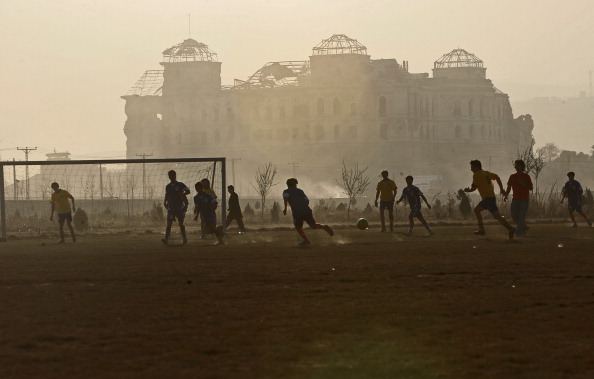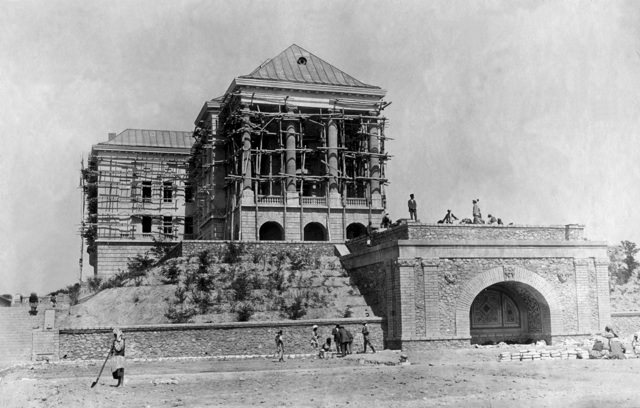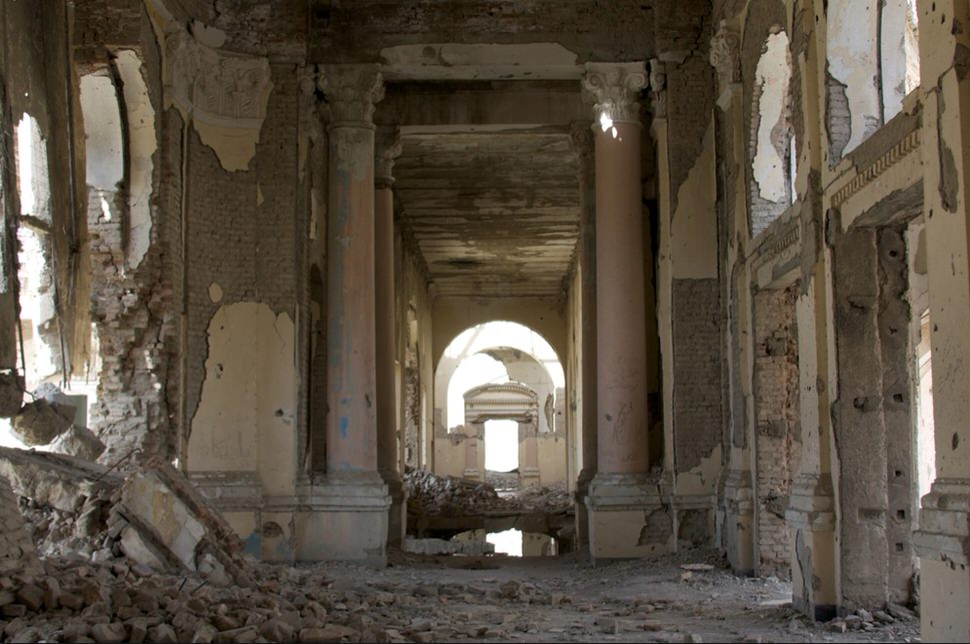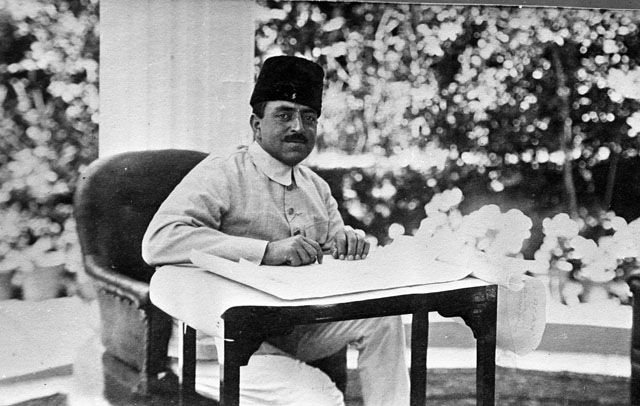###Amanullah
Amanullah ruled Afghanistan from 1919 to 1929, first as amir and then, after he changed his own title, as king. During his brief reign, Amanullah launched an ambitious program of modernization from above, which was cut off prematurely by a revolt from below. His many reforms included promulgating rule of law through Afghanistan’s first constitution; investing in education through literacy programs and the building of schools; promoting unveiling and the end of purdah; transforming the traditional institution of the Loya Jirga, or Grand Council, into a mechanism for public consultation; winning Afghanistan’s independence from Britain; and large-scale urban planning, with the partial completion of the “new city” of Dar ul-Aman, just to the west of Kabul. Both his reforms and his failures have set the pattern for successive generations of Afghan modernizers, who have returned again and again to his unfinished project, only to succumb to their own blind spots and collapse in their own ways.
###Dar ul-Aman
Dar ul-Aman, which translates as “abode of peace,” is the name of both the district imagined by Amanullah as his ideal “new city,” and the Dar ul-Aman Palace that was to be its center. While Amanullah’s ambitious plan for the district was never fully realized, the Dar ul-Aman Palace was almost completed when a rural rebellion forced Amanullah into exile in 1929. A French architect had drawn up the original plans, but after diplomatic relations were established between Germany and Afghanistan, the mayor of Berlin sent Walter Harten and his team of twenty-two architects and town planners to Kabul in October 1926.
Harten’s team took over the district planning, which included preparing the detailed specs for the palace: it would be thirty-three meters high, and each floor would have 5,400 square meters of space. The big oval theater on the third floor was designed to be the Majlis, the meeting place of Parliament; the first floor, overlooking the great road, was intended as offices of the king, his private secretaries, and the ministries of the court (wazirs). After Amanullah was exiled, Dar ul-Aman was used successively as Kabul University’s medical school, a storage space for raisins, the Ministry of Finance, the Ministry of Public Works, the Ministry of Justice and Supreme Court, the General Staff building, the Ministry of Defense, a mujahidin base camp, a refugee camp, and temporary housing for resettled nomads. These days it is also occasionally used as a film set.
###Fire
The Dar ul-Aman Palace burned three times in the twentieth century, on December 14, 1968; December 27,1979; and March 7, 1990. The 1979 fire was caused by grenades thrown by spetsnaz operatives, who had taken over Dar ul-Aman on their way to assassinate President Hafizullah Amin in the Tajbeg Palace up the hill. The 1990 fire was the result of rockets fired at Dar ul-Aman by government troops loyal to Najibullah when Defense Minister Tanai tried to launch a coup from the palace in concert with Gulbuddin Hekmatyar and the mujahidin of Hizb-e-Islami. Islah, the official government newspaper, printed this report of the 1968 fire:
The Dar ul-Aman Palace caught fire in the early afternoon and continued burning until 12:30AM on the following day. A source from the Ministry of Public Works indicated that the fire was concentrated on the third floor, where the Departments of Roads, Dams and Canals, Administration, Engineering and the Public Works Corporation were housed. The Fire Department reached the building at 2:30PM sharp, but because the third floor was 18 meters high, the fire came under control only after great effort. The prime minister, expressing great sadness, ordered that this valuable and historic building be restored immediately.
Whispers in the city attributed the destruction to the intolerance of the ruling dynasty for Amanullah, accusing the royal house of sabotage. However, when an inquiry was made, some low-ranking officials were found guilty, fired from their jobs, and forced to sell their assets to compensate the state. Official records do not mention why these men might have been moved to set fire to their own workplace. As they discovered, however, once a fire is started, it almost always burns more than you bargained for.
###Mujahidin
As you walk into the present-day palace of Dar ul-Aman, the abode of peace, you pass a wall pockmarked with bullet holes and scrawled with graffiti. One layer of this palimpsest exhorts: “O mujahid, adopt the way of battle, take a sword in your hand, so that they know that this is not the land for every piece of dirt, it is the pure and sacred land of Afghanistan.” On an interior wall on the ground floor, a mujahid plagued by doubts has been reassured with the legend, “There is no defect in Islam; whatever defect exists lies in our way of practicing Islam.” Farther down the corridor, a disillusioned foot soldier has rejoined, “Gulbuddin [Hekmatyar] is a national traitor.” In a second-floor room full of postscripts for fallen comrades, a memorial for Mohammed Azim has been overlaid with the following exchange. From the first writer: “As long as there is a battle, we will be steadfast.” From the second: “You will battle as long as there is money to keep you going.”
Advertisement
###Ruins
Like the empty niches and half-effaced cave frescoes that we now refer to as the Buddhas of Bamiyan, the wreckage of Dar ul-Aman records not a single act of destruction, but rather a series of collapses, most initiated from within the government. The fire set in the palace’s records room by officials in the Ministry of Public Works was followed by the coup launched from the palace by officials from the Ministry of Defense, which provoked the bombing of the palace by other factions of the government. When the quarrels within the mujahidin coalition tore apart the city in the early 1990s, Dar ul-Aman became both base camp and target. The re-taking of Kabul from the Taliban left a crater in the center of the palace, made by a U.S. bomb that plummeted through all three floors and deep into the ground below. Sandbag-reinforced lookouts, second-floor offices converted into improvised mosques, the debris left behind by refugees who sheltered in the east wing-these traces exist alongside, and helplessly modify, the bones of Dar ul-Aman’s grand ballroom, still lovely in its fading green and pink, and the fluted columns that support the long, long corridors, leading the eye to some vanishing point that perhaps once existed in the architecture itself, but now must be imagined, around a corner or through a window or, more simply, in the piece that is missing.
###Unfinished
For Afghans, the Dar ul-Aman Palace has always symbolized the unfinished project of which it was both the most visible and smallest part. These days, 70 percent of the dwellings in Afghan cities are informal and illegal-constructed without plan or permission, growing haphazardly in the cracks and corners and hastily patching over all the wounds made by war. Repeated attempts to return to Amanullah’s unfinished project indicate both a yearning for what he represents and the difficulty of attaining it. It will take years to close the gap in literacy between men and women caused by the repressions of the Taliban, and the exodus of intellectuals during the war has drained educational institutions of vitality and credibility. While a vocal press has revived freedom of expression, the intelligentsia lacks consensus on a vision that combines freedom and responsibility. Rule of law, the most vital part of Amanullah’s legacy, is fragile. Most agree that justice is not blind, and that the poor suffer from injustice and abuse at the hands of the powerful and the rich. Independence, as embodied by a strong state that can reflect the aspirations and respond to the needs of its citizens, has yet to be attained. Until the unfinished project is finished, Amanullah’s ghost will linger, haunting another century with what might have been.
The above text was excerpted and adapted from Mariam & Ashraf Ghani’s Afghanistan: A Lexicon, published by Hatje Cantz as part of its “100 Notes – 100 Thoughts” series for the German exhibition dOCUMENTA (13)in Kassel, Germany, where Mariam Ghani’s video installation, A Brief History of Collapses, can be seen at the Fridericianum through September 16.





